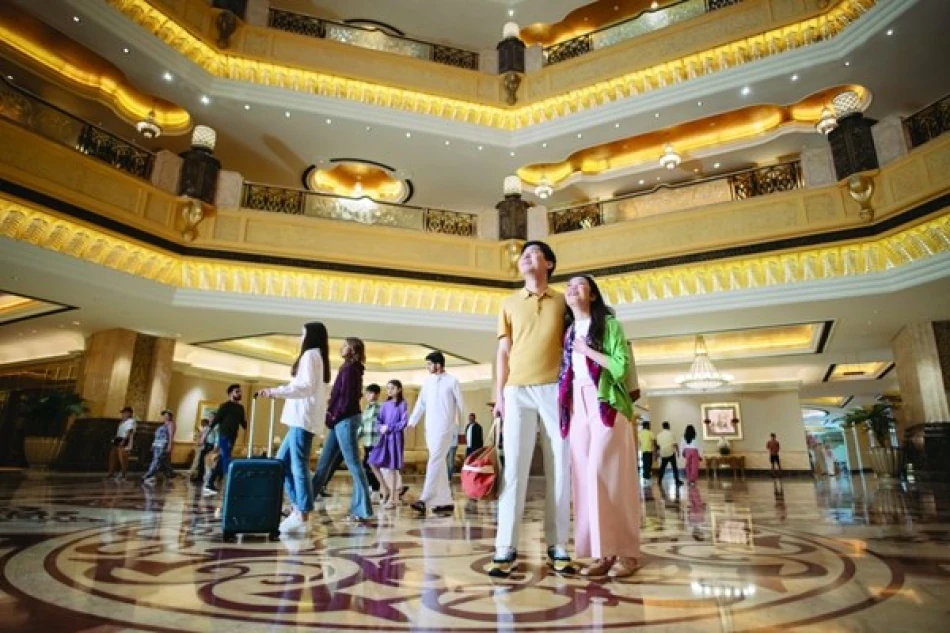
Abu Dhabi Hotels Achieve Record Occupancy of 79.3% with 4.4% Growth in August
Abu Dhabi's Tourism Boom: Record Hotel Performance Signals Economic Diversification Success
Abu Dhabi's hospitality sector achieved a historic milestone in August 2024, recording its highest-ever occupancy rate of 79.3% for the month—a 4.4% increase from the previous year. Combined with surging room rates and revenue per available room jumping 15.4%, the data underscores the emirate's successful pivot toward tourism as a cornerstone of economic diversification beyond oil dependency.
August Performance Breaks Multiple Records
The emirate's hotel sector demonstrated remarkable resilience and growth across key metrics, according to hospitality data provider CoStar. Average daily room rates reached AED 482.32 ($131), representing a 10.6% year-over-year increase, while revenue per available room climbed to AED 382.25—a robust 15.4% gain that signals both higher occupancy and pricing power.
Peak performance coincided with major events, particularly around August 11, when hotels achieved 90.7% occupancy—the highest single-day rate of the month. This surge preceded a Limp Bizkit concert at Etihad Arena on August 12, demonstrating how entertainment programming drives hospitality demand.
Event-Driven Tourism Strategy Pays Off
The launch of the Abu Dhabi International Hunting and Equestrian Exhibition (ADIHEX) on August 30 provided another boost, pushing occupancy to 72.8% on its opening day. The exhibition, which ran through September 7, attracted significant visitors from local and Gulf markets, highlighting the emirate's success in targeting regional tourism segments.
Notably, hotel occupancy exceeded 70% on all but two days during August—a consistency that reflects both strong baseline demand and effective event scheduling throughout the month.
First-Half Performance Indicates Sustained Growth Trajectory
Abu Dhabi's tourism momentum extends well beyond August's record performance. First-half 2024 data from the Abu Dhabi Statistics Centre reveals hotel revenues surged 20% to AED 4.32 billion ($1.18 billion), compared to AED 3.6 billion in the same period last year.
The emirate's hotels welcomed 2.92 million guests during the first six months, maintaining an impressive 80% average occupancy rate. Monthly performance showed particular strength during peak season, with February hitting 86% occupancy and April reaching 87%.
Regional Competition and Market Positioning
Abu Dhabi's performance stands out in an increasingly competitive Gulf tourism landscape. While Dubai continues to lead in visitor volumes, Abu Dhabi's focus on premium positioning and cultural tourism appears to be generating superior revenue per visitor metrics.
The emirate's strategy differs markedly from regional competitors like Qatar, which has emphasized sports tourism, or Saudi Arabia's emerging entertainment-focused approach. Abu Dhabi's blend of cultural attractions, business events, and premium hospitality creates a more diversified revenue base less susceptible to single-sector volatility.
Investment Implications and Economic Impact
For investors and developers, Abu Dhabi's hospitality performance validates the emirate's long-term tourism investment thesis. The consistent occupancy rates above 70% provide stable cash flows for hotel operators, while rising room rates indicate pricing power that should support new development projects.
The 20% revenue growth in the first half suggests tourism is becoming a meaningful contributor to Abu Dhabi's non-oil economy. With the UAE targeting 40 million visitors nationally by 2031, Abu Dhabi's premium positioning should capture a disproportionate share of high-spending tourists.
The sustained performance across multiple months, rather than isolated peaks, indicates Abu Dhabi has successfully transitioned from an oil-dependent economy to a diversified hub where tourism generates consistent, growing revenues—a model other Gulf states are now rushing to replicate.
Most Viewed News

 Layla Al Mansoori
Layla Al Mansoori






